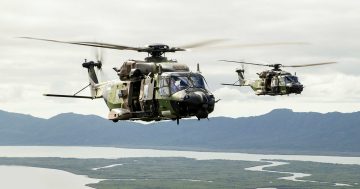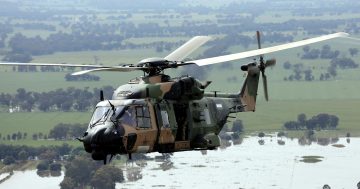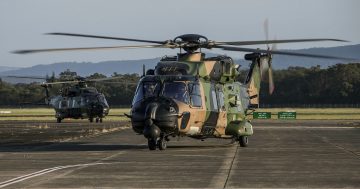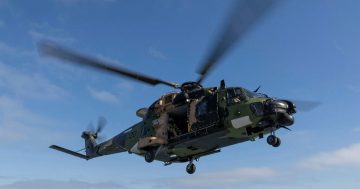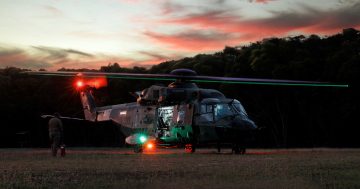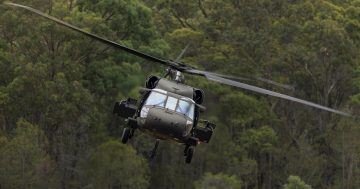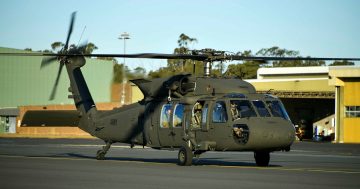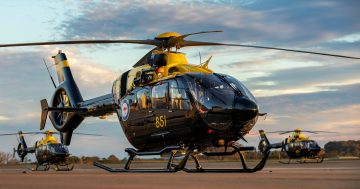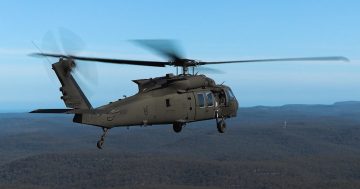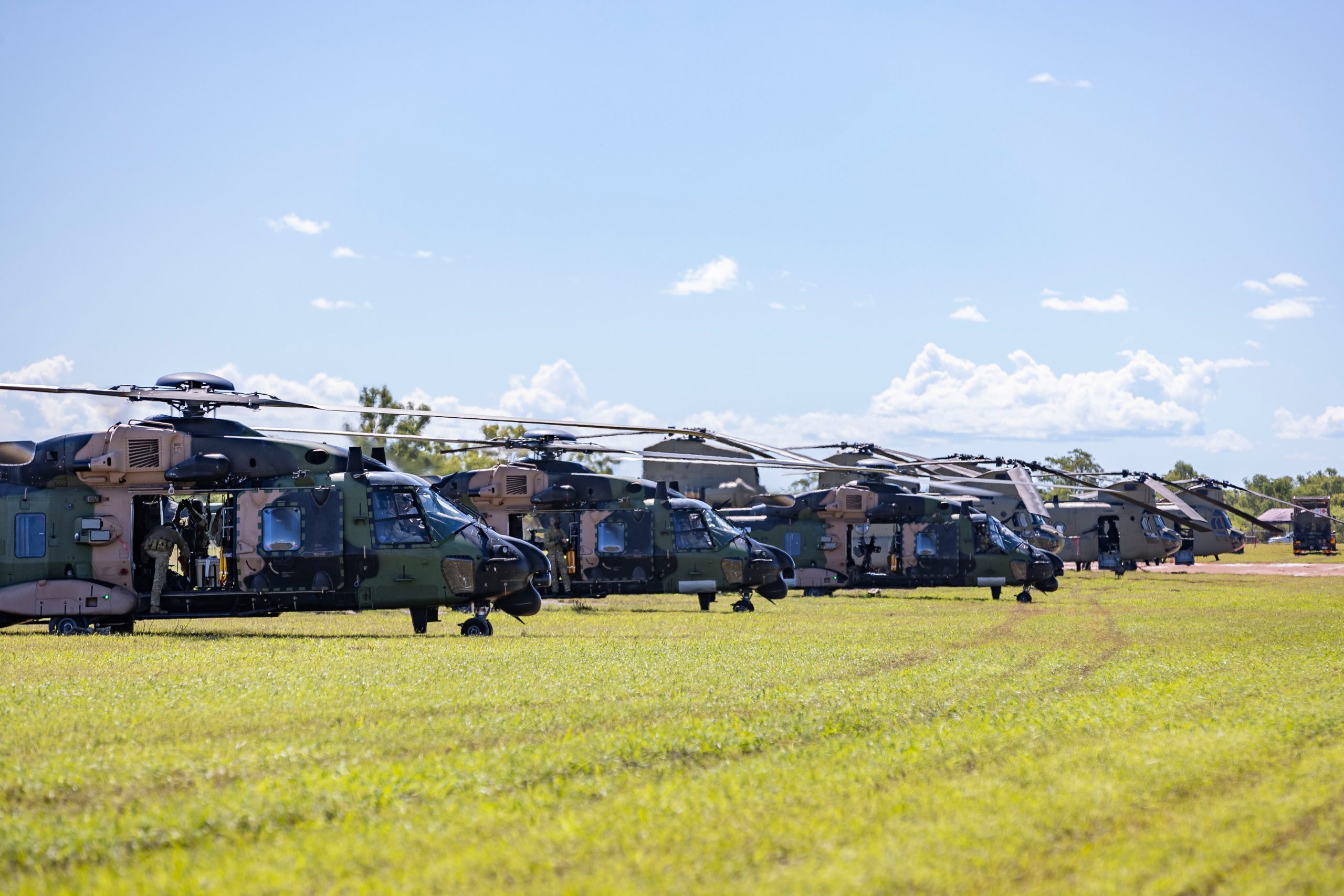
Army Taipans seen alongside Chinook helicopters in better days. Photo: ADF.
A report into the fatal crash of an Australian Army MRH 90 Taipan in July 2023 has been handed down by the Defence Flight Safety Bureau (DFSB).
The Aviation Safety Investigation Report was handed to Chief of Air Force Air Marshal Stephen Chappell on 28 March. As Chief of Air Force, AIRMSHL Chappell is the Defence Aviation Authority with accountability for the regulation and oversight of all aspects of Defence aviation.
The accident occurred on the night of 28 July 2023 when the MRH 90 Taipan, callsign ‘Bushman 8-3’, was flying at low level in formation with other Australian, US and New Zealand helicopters in the Whitsunday Islands as part of the multinational Exercise Talisman Saber.
The aircraft was reportedly seen to briefly pitch up before crashing into the water at high speed, where it broke up. Captain Danniel Lyon, Lieutenant Maxwell Nugent, Warrant Officer Class 2 Joseph ‘Phillip’ Laycock, and Corporal Alexander Naggs lost their lives in the accident.
Shortly afterwards the Army grounded all of its Taipan fleet pending an initial investigation, and the government subsequently permanently withdrew the aircraft from service.
The Taipans have since been replaced by the Sikorsky UH-60M Black Hawk in service, the first of which was delivered shortly after the accident, and which has recently achieved an initial operational capability (IOC).
Various causal factors were mentioned during independent public hearings into the crash, including testimony from a former Army test pilot about concerns over the fidelity of the pilots’ Top Owl helmet-mounted sights (HMS) which project air data information and visual graphics onto the inside of the helmet’s visor.
In the meantime, much has been made in the defence community and the trade media of Army’s decision to dismantle and scrap the MRH 90 airframes – all of which were barely halfway through their planned service lives – rather than keep them in storage pending the final investigation and a possible use or follow-on customer being found for them.
The aviation safety investigation has been described as one of the most complex conducted by Defence in recent history. Rather than seek to apportion blame, it analysed causal and contributory factors including individual/crew actions, local conditions, risk controls and organisational influences in order to make recommendations for safety improvement and to prevent a recurrence.
In a statement, AIRMSHL Chappell said he knew everyone’s thoughts were with the families, friends and colleagues of those who died in the accident.
“Today, the investigators briefed the report, its findings and recommendations to the families of the crew who tragically lost their lives in the accident,” he said.
“On the completion of the briefings to the families, the investigators briefed the crew members who were airborne that night as part of the Bushman formation.”
AIRMSHL Chappell said the report identified a number of findings and recommendations across the Defence aviation safety program.
“Over the next few weeks, the accident investigators will begin the next crucial part of the investigative process,” he said. “This is the critical debriefing and learning phase.
“The investigators will travel across Army Aviation Command units and visit other key Defence aviation stakeholders to brief in detail the findings and recommendations of the investigation report.
“My focus and commitment is to the generative safety culture of the ADF and the Defence aviation community, and these briefings are a vital part of this process.”

The MRH 90 had a troubled service life with the ADF and was withdrawn some 13 years earlier than planned. Photo: ADF.
AIRMSHL Chappell said a publicly releasable report would be made available in the May timeframe which he said would include all of the findings and recommendations.
The report came just days before the 20th anniversary of the crash of a Royal Australian Navy Seaking helicopter on the Indonesian island of Nias on 2 April 2005. Of the 11 crew and passengers onboard, only two survived.
The Seaking, callsign ‘Shark 0-2’ was conducting relief operations off the coast of Sumatra in the wake of a magnitude 8.6 earthquake and subsequent tsunami which devastated the region days earlier.
‘Shark 0-2’ was part of a two-aircraft flight from the former HMAS Kanimbla when its flight controls failed, causing the nose of the aircraft to pitch down and impact the ground.


